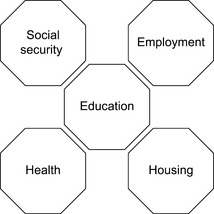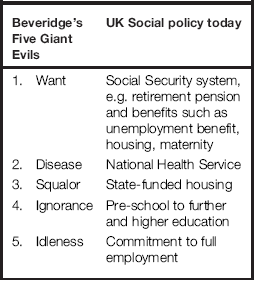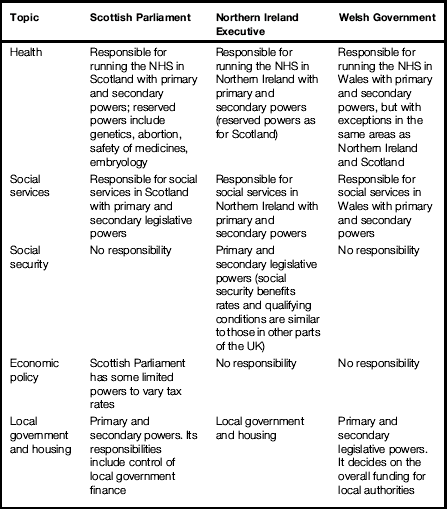1 • To explore the health and social care context of community nursing • To clarify the meaning of primary, secondary and community care Nursing students sometimes find the study of social policy challenging and have difficulty appreciating its relevance to nursing practice, particularly from the perspective of a hospital ward. In a community setting social policy comes alive. It is the blueprint for how we live, work and play and for how the most vulnerable members of our society are protected and cared for. While you are in the community, you will see how social policy applies to society on a daily basis but before we look at this in more detail, try the following exercise; you may be surprised how much we take for granted in our own lives. Even a basic grasp of social policy makes it easier to understand health and health inequalities in society and within communities. Social policy is a complex area and political parties, academics, professionals and individuals have different views on the provision of welfare and the role of the state. Social policy is very relevant to nursing and health care and the National Health Service, used by most people at some point in their lives, is one of the most important areas. (See the National Archives website for actual documents from the setting up of the Welfare State and other social policy issues over time in the UK: http://www.nationalarchives.gov.uk/pathways/citizenship/brave_new_world/welfare.htm). The UK is renowned for its welfare state which came into being after the Second World War. Essentially, the Welfare State was a package of social policies introduced to eradicate the five ‘Giant Evils’: squalor, ignorance, want, idleness and disease, which were identified by William Beveridge in his report to the British Parliament in 1942. The plans proposed in the Beveridge report are the foundation for the welfare state as it is in the UK today. Table 1.1 shows examples of current social policy related to Beveridge’s five Giant Evils. Personal and social services are also fundamental to welfare provision and often go hand in hand with other social policy such as health, social security and housing. 1. The Public sector, e.g. National Health Service, local authority social services 2. The Private sector, e.g. private hospitals, nursing homes and care homes 3. The Third sector, e.g. voluntary and non-profit organisations Devolution has therefore resulted in each country running its own services, shaped by its own legislation and the needs of the population, and influenced by the political ideology of the government. Table 1.2 summarises devolved health-related topics by UK country. Health and social care policies designed to shift the balance from secondary to primary care are a common theme in healthcare reform in all four UK countries. The potential of services provided close to home has been recognised as being comprehensive, co-ordinated, what people want and less costly, whereas secondary care services are increasingly being viewed as costly, fragmented and to be used only when a local solution is not available. The importance of the contribution of community nursing to this agenda is articulated in health policy across the UK and, although nurses are not expected to be experts in all areas of social policy, they should be familiar with the aspects that affect those for whom they provide services.
The context of community nursing
Social policy
Welfare provision in the UK
The public sector
The four United Kingdom (UK) countries
The National Health Service

















